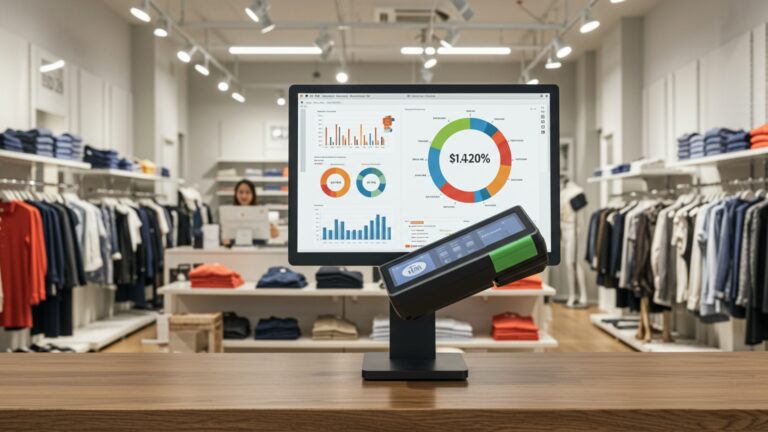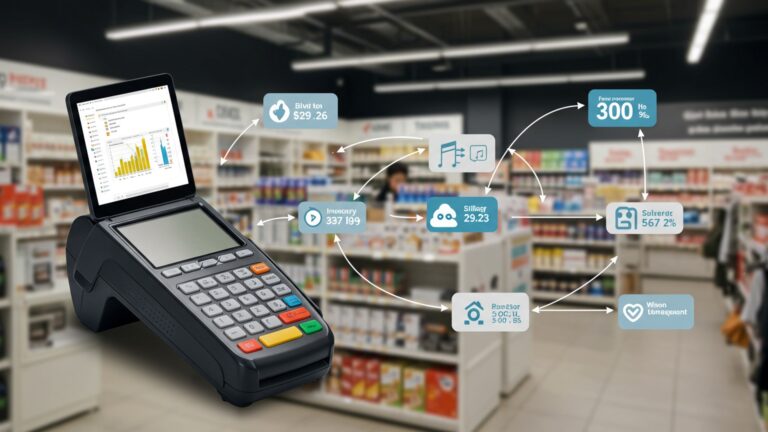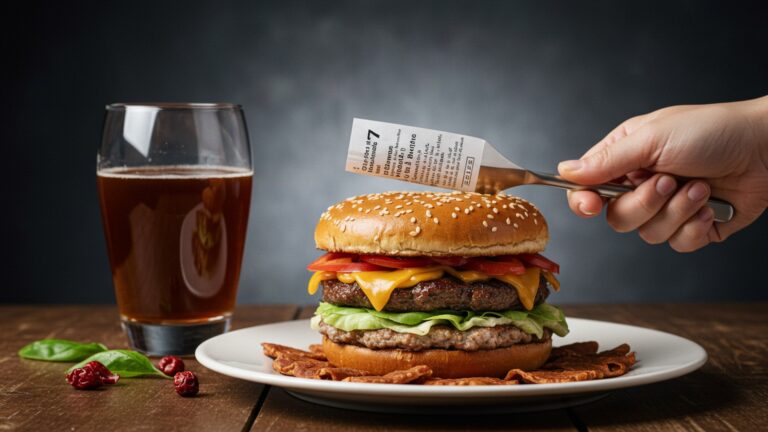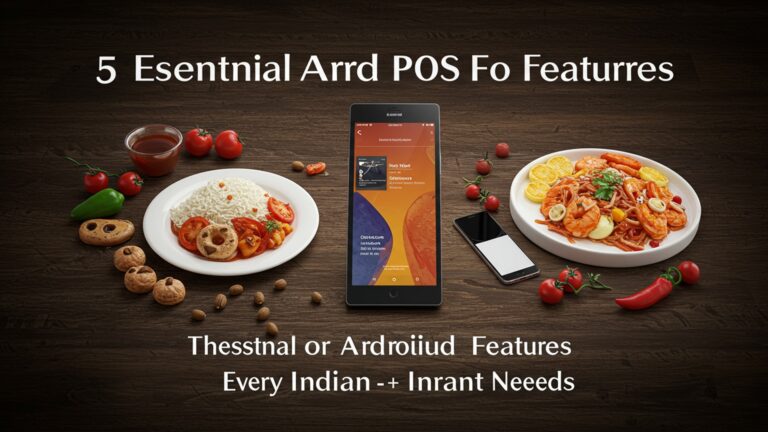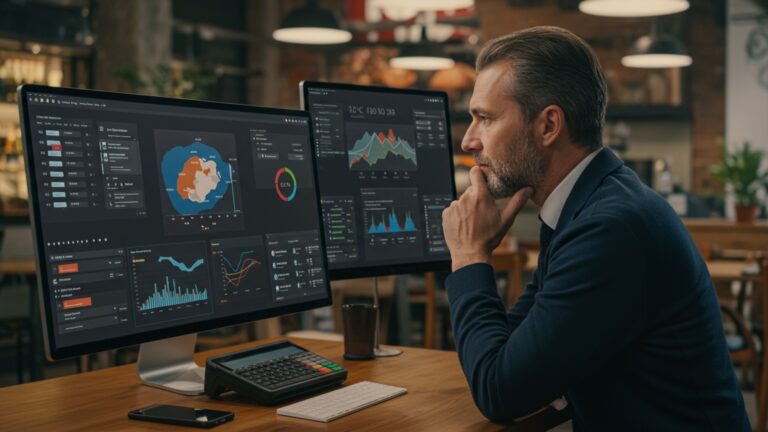7 Essential Features Your Restaurant Billing Software India Needs to Thrive
In India’s fiercely competitive culinary landscape, where swift service meets diverse digital payment demands, a basic cash register no longer cuts it. Modern restaurant billing software India needs to be more than just a transaction processor; it’s the operational backbone for sustained growth. With the surge in UPI transactions, the evolving complexity of GST compliance. the omnipresence of delivery aggregators like Swiggy and Zomato, a truly effective system must seamlessly integrate these critical functionalities. Beyond just generating invoices, the right software empowers restaurateurs to manage inventory in real-time, streamline KOTs during peak dinner rushes. offer a frictionless customer experience, directly impacting profitability and sustained success in this dynamic market.
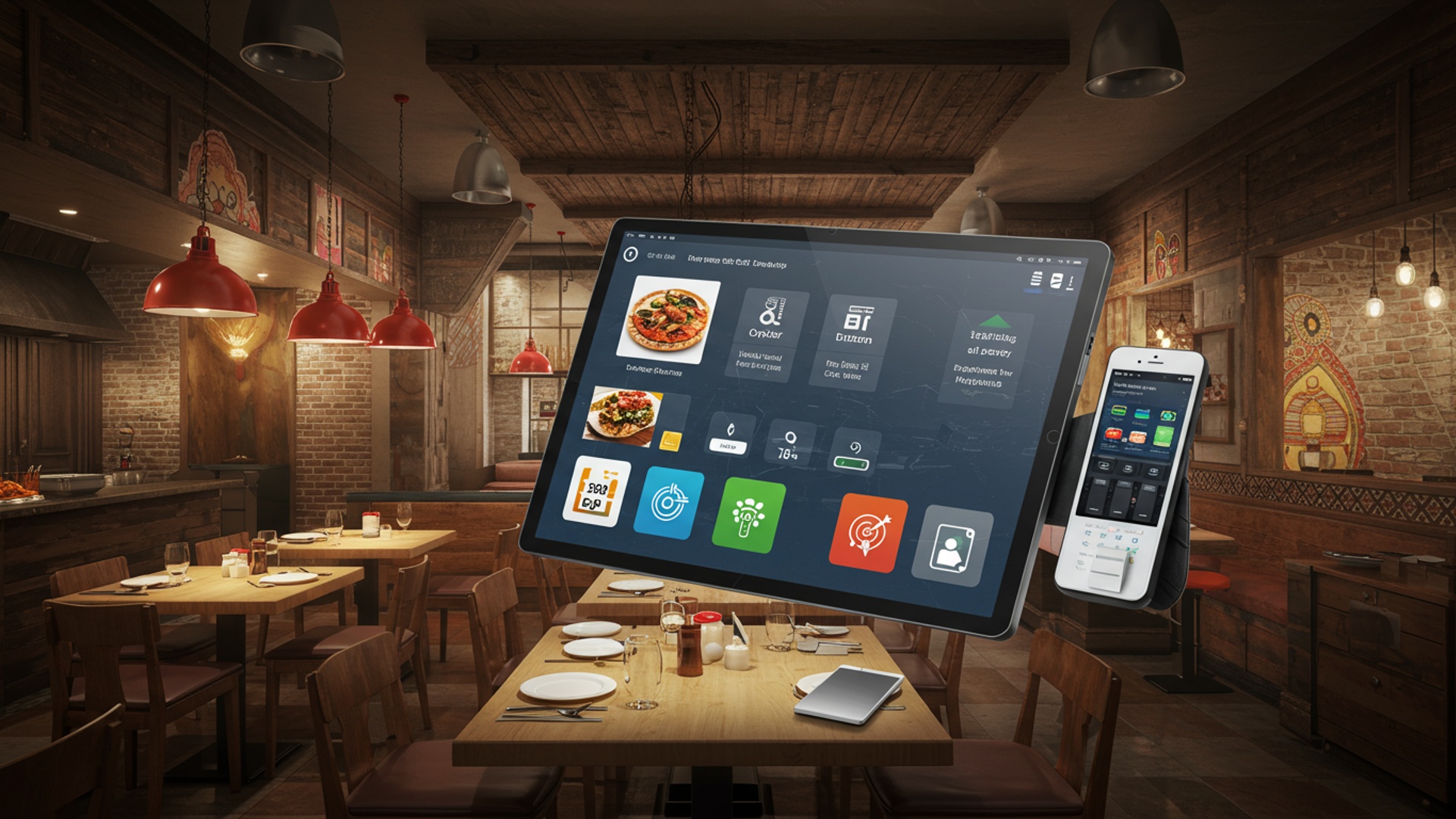
1. Intuitive User Interface (UI) and Exceptional User Experience (UX)
In the fast-paced environment of a restaurant, time is literally money. An intuitive User Interface (UI) combined with an exceptional User Experience (UX) in your Restaurant billing software India isn’t just a luxury; it’s a fundamental necessity. This feature dictates how easily your staff can interact with the system, directly impacting service speed, order accuracy. overall operational efficiency.
- UI (User Interface)
- UX (User Experience)
This refers to what you see and interact with on the screen – the buttons, menus, icons. overall layout. A good UI is clean, uncluttered. aesthetically pleasing.
This encompasses the entire journey a user takes when interacting with the software. It’s about how easy, efficient. satisfying that interaction is. A good UX means a waiter can take an order, send it to the kitchen. process a payment with minimal clicks and without confusion.
- Reduced Training Time
- Fewer Errors
- Faster Service
- Staff Satisfaction
New staff can learn the system quickly, minimizing the learning curve and getting them productive faster. Imagine a new server confidently navigating the menu and taking orders on their first day, rather than fumbling and asking for help.
A logical flow and clear options reduce the chances of incorrect orders being placed or wrong bills being generated, saving both food costs and customer frustration.
Quick order entry and billing directly translate to faster table turnover, especially crucial during peak hours in a busy Indian restaurant. Customers appreciate prompt service, leading to higher satisfaction and repeat visits.
When a tool is easy to use, staff are less stressed and more productive, leading to a better working environment.
Consider a bustling South Indian tiffin center during breakfast rush. The billing counter needs to process dozens of orders for idlis, dosas. vadas in minutes. A Restaurant billing software India with a touch-friendly, icon-based menu allows the cashier to quickly select items, apply discounts. generate bills without delays, keeping the queue moving smoothly.
2. Robust Order Management System (OMS)
At the heart of any successful restaurant operation is an efficient system for managing orders from the moment they are taken until they are served. A robust Order Management System (OMS) within your Restaurant billing software India handles the complex flow of orders, ensuring accuracy and coordination across the kitchen, bar. service staff.
- Kitchen Order Tickets (KOTs) and Bar Order Tickets (BOTs)
- Table Management
- Order Customization (Modifiers)
- Split Billing & Merging
- Combo and Package Management
These are digital chits sent directly to the kitchen or bar display systems/printers as soon as an order is placed. This eliminates manual errors, speeds up preparation. ensures the right items go to the right stations.
Visual representation of your restaurant layout, allowing staff to easily assign orders to tables, track occupied tables. manage table status (e. g. , occupied, vacant, dirty). This is crucial for efficient seating and service flow.
The ability to add specific requests like “extra spicy,” “no onion,” “less oil,” or “add cheese” to menu items. This ensures customer preferences are met accurately, a common requirement in diverse Indian cuisine.
Essential for group dining, allowing customers to easily split bills by item or by person. Conversely, merging bills for tables that decide to sit together is also vital.
Easily create and manage special combo offers (e. g. , “Thali special,” “Lunch combo”) where multiple items are bundled at a specific price.
- Improved Accuracy
- Faster Preparation
- Enhanced Customer Satisfaction
- Better Table Turnover
Digital KOTs/BOTs drastically reduce miscommunication between service staff and the kitchen/bar.
Orders reach the preparation stations instantly, cutting down on wait times for customers.
Accurate custom orders and flexible billing options (like split bills) significantly improve the dining experience.
Efficient table management allows you to seat new customers faster, maximizing your restaurant’s capacity.
A family of five dines at your multi-cuisine restaurant. One child wants “pasta without olives,” another “extra cheese on pizza.” The adults want to split their bill evenly, while one person pays for their specific drink separately. A strong OMS within your Restaurant billing software India handles all these requests effortlessly, preventing confusion and ensuring a smooth dining experience.
3. Integrated Payment Gateway and Multiple Payment Options
In India, the digital payment landscape is incredibly diverse and constantly evolving. A truly thriving Restaurant billing software India must offer seamless integration with various payment gateways and support a multitude of payment methods. This caters to the convenience of your customers and streamlines your financial operations.
- Cash
- Credit/Debit Cards
- UPI (Unified Payments Interface)
- Digital Wallets
- Net Banking
- Loyalty Points/Gift Vouchers
Still a prevalent payment method, especially for smaller transactions.
Integration with POS terminals for major card networks (Visa, Mastercard, RuPay, Amex).
Crucial in India, supporting apps like Google Pay, PhonePe, Paytm, BHIM, etc. Your software should ideally generate dynamic QR codes for easy scanning and payment confirmation.
Integration with popular wallets like Paytm Wallet, MobiKwik, Amazon Pay.
For customers who prefer direct bank transfers.
If your restaurant runs its own loyalty program, the software should allow redemption of points or use of gift vouchers as a payment option.
- Customer Convenience
- Faster Transactions
- Improved Security
- Automated Reconciliation
- Reduced Human Error
Offering diverse payment options meets customer expectations and ensures they can pay using their preferred method, reducing cart abandonment (or bill abandonment, in this case).
Integrated systems reduce manual entry errors and speed up the payment process, leading to quicker checkouts.
Reputable payment gateways offer robust security features, protecting both your business and customer data.
Transactions are automatically recorded and reconciled with your sales data, simplifying accounting and reducing discrepancies.
No need for staff to manually punch in amounts into separate EDC machines or verify UPI payments manually, which can lead to errors.
| Feature | Integrated Payment Gateway | Separate Payment Terminals/Manual |
|---|---|---|
| Speed of Transaction | Very Fast (automatic amount transfer) | Slower (manual amount entry, verification) |
| Error Rate | Very Low (automated) | Higher (manual entry, human verification) |
| Reconciliation | Automated, seamless with sales data | Manual, prone to discrepancies |
| Customer Experience | Smooth, professional, convenient | Can be clunky, delays, potential for frustration |
| Security | Enhanced, often PCI DSS compliant | Depends on individual terminal/method, less holistic |
When choosing a Restaurant billing software India, prioritize solutions that boast extensive payment integration, particularly with UPI and local digital wallets, as these are increasingly becoming the norm in India.
4. Comprehensive Inventory Management and Stock Control
For any restaurant, food costs are a major expense. efficient inventory management is the bedrock of profitability. A top-tier Restaurant billing software India must include a comprehensive system for tracking ingredients, managing stock levels. minimizing waste.
- Real-time Stock Tracking
- Recipe Management
- Supplier Management
- Purchase Order Generation
- Waste Management
- Multiple Storage Locations
Monitor ingredient levels as they are consumed with each order. When a dish is sold, the system automatically deducts the required ingredients from inventory.
Define precise recipes for each menu item, detailing the exact quantity of every ingredient. This ensures consistency and accurate stock deductions.
Keep records of your suppliers, their pricing. order history, simplifying the reordering process.
Automatically generate purchase orders based on low stock levels and predefined reorder points.
Track spoilage, breakage, or items used for staff meals, providing insights into potential areas for cost reduction.
Manage inventory across different storage areas (e. g. , dry store, freezer, refrigerator).
- Cost Control
- Reduced Theft
- Optimized Ordering
- Consistent Quality
- Better Menu Engineering
Prevents over-ordering and reduces food waste, directly impacting your profit margins. A study by The National Restaurant Association estimates that food waste costs the U. S. restaurant industry billions annually; while specific India data varies, the principle holds true.
Accurate tracking helps identify discrepancies and prevent internal pilferage.
Ensures you always have enough ingredients for popular dishes without excess stock tying up capital or risking spoilage.
Standardized recipes ensure every dish is prepared consistently, enhancing customer satisfaction.
grasp the actual cost of each dish, helping you price menu items strategically for maximum profitability.
“Chai Adda,” a popular tea and snack chain, implemented a Restaurant billing software India with robust inventory management. Before, they struggled with inconsistent chai quality and frequent stockouts of key ingredients like ginger and cardamom. After implementation, they defined precise recipes for each chai variant. The software automatically deducted ingredients per cup sold. Within three months, they reported a 15% reduction in ingredient waste, a 10% improvement in inventory accuracy. a noticeable increase in customer satisfaction due to consistent product quality, directly impacting their profitability.
5. Customer Relationship Management (CRM) and Loyalty Programs
In today’s competitive F&B market, retaining customers is often more cost-effective than acquiring new ones. A Restaurant billing software India that incorporates robust Customer Relationship Management (CRM) features and facilitates loyalty programs is a powerful tool for building lasting customer relationships and fostering repeat business.
- Customer Data Capture
- Purchase History Tracking
- Personalized Marketing
- Loyalty Point Systems
- Membership Programs
- Feedback Management
Collect essential customer insights (name, contact number, email, birthdate/anniversary) at the point of sale or through online ordering.
Record what customers order, how frequently they visit. their average spend. This provides valuable insights into preferences.
Use collected data to send targeted promotions, birthday discounts, or special offers based on past purchases (e. g. , “We noticed you love our biryani, here’s a special offer on your next order!”).
Implement a points-based system where customers earn points for every rupee spent, redeemable for discounts or free items.
Create tiered membership levels with exclusive benefits for loyal customers.
Integrate mechanisms for customers to provide feedback, allowing you to address concerns and improve service.
- Increased Repeat Business
- Enhanced Customer Experience
- Targeted Marketing
- Data-Driven Decisions
- Competitive Advantage
Loyalty programs incentivize customers to return, building a strong base of regular patrons.
Personalized communication and offers make customers feel valued and understood.
Instead of generic promotions, you can craft campaigns that resonate with specific customer segments, leading to higher conversion rates.
comprehend your customer base better – who are your most valuable customers? What are their preferences?
Stand out from competitors by offering a personalized and rewarding experience.
Imagine a customer, Ms. Sharma, who frequently orders your vegan thali. Your Restaurant billing software India’s CRM module tracks this. On her birthday, the system automatically sends her an SMS with a special offer for a free vegan dessert on her next visit. This personalized touch not only makes Ms. Sharma feel special but significantly increases the likelihood of her choosing your restaurant over others for her birthday celebration.
6. Comprehensive Reporting and Analytics
Data is the new currency. for a restaurant, actionable insights derived from sales and operational data are invaluable. A powerful Restaurant billing software India doesn’t just process transactions; it transforms raw data into meaningful reports and analytics that empower you to make informed business decisions, optimize operations. boost profitability.
- Sales Reports
- Daily/Weekly/Monthly Sales
- Sales by Item
- Sales by Category
- Sales by Payment Method
- Sales by Staff
- Inventory Reports
- Stock Levels
- Usage Reports
- Waste Reports
- Customer Reports
- Top Customers
- Customer Preferences
- Employee Performance Reports
- Peak Hour Analysis
Track revenue trends over time.
Identify your best-selling and slowest-moving dishes (“hot sellers” vs. “dead stock”).
comprehend which menu categories (e. g. , appetizers, main courses, desserts) are performing best.
See the breakdown of cash, card, UPI, etc. , payments.
Monitor individual staff performance.
Real-time view of all ingredients.
How much of each ingredient is being consumed.
Track spoilage and wastage.
Identify your most loyal and high-spending patrons.
examine ordering patterns to grasp preferences.
Track individual sales, tips. clock-in/out times.
Identify your busiest hours and days to optimize staffing and inventory.
- Menu Optimization
- Staffing Efficiency
- Inventory Control
- Marketing Strategy
- Problem Identification
Use sales data to remove unpopular items, promote best-sellers. introduce new dishes based on trends.
Schedule staff more effectively by understanding peak and lean hours, reducing labor costs.
Optimize purchasing decisions, reduce waste. negotiate better deals with suppliers.
Tailor promotions based on customer preferences and peak sales periods.
Quickly pinpoint issues like declining sales for a specific item or inconsistent staff performance.
Your Restaurant billing software India’s analytics dashboard shows that your “Paneer Tikka Masala” is a consistent top seller. its profit margin is lower than expected due to high ingredient costs. The report also highlights that Tuesdays are surprisingly busy, while Wednesdays are very slow. With this details, you can:
- Negotiate better prices for paneer or adjust the portion size/price of the tikka masala.
- Offer a “Wednesday Special” discount to attract more customers on slow days.
- Increase staffing slightly on Tuesdays to manage demand better.
This data-driven approach moves your restaurant from guesswork to strategic decision-making.
7. Cloud-Based Architecture with Offline Capability
The modern business landscape demands flexibility, accessibility. resilience. For a Restaurant billing software India, a cloud-based architecture combined with robust offline capability is no longer an option but a critical requirement. This dual approach ensures your operations run smoothly regardless of internet connectivity issues, while leveraging the benefits of cloud technology.
- Cloud-Based Software
- The software and your data are hosted on remote servers (the “cloud”) rather than on local computers.
- Accessed via the internet from any device (laptop, tablet, smartphone).
- Updates and maintenance are managed by the software provider.
- Offline Capability
- The software can function fully even when there is no internet connection.
- It stores transactional data locally on your device during the outage.
- Once the internet connection is restored, all locally stored data automatically syncs with the cloud server.
- Uninterrupted Operations
- Accessibility
- Data Security and Backup
- Scalability
- Cost-Effectiveness
- Automatic Updates
Internet outages, while less frequent, can still occur in various parts of India. Offline capability ensures your billing and ordering can continue without disruption, preventing lost sales and customer frustration.
Manage your restaurant from anywhere – check reports from home, monitor inventory while traveling, or update menus remotely. This is particularly useful for owners managing multiple outlets.
Cloud providers offer robust security measures and automatic data backups, protecting your valuable business data from hardware failures, theft, or natural disasters.
Easily scale your operations up or down without significant IT infrastructure investment. Adding new terminals or opening a new branch becomes simpler.
Reduces the need for expensive on-premise servers and dedicated IT staff for maintenance.
Cloud software is regularly updated with new features and security patches, ensuring you always have the latest version without manual effort.
| Feature | Cloud-Based (with Offline Capability) | On-Premise (Traditional) |
|---|---|---|
| Data Hosting | Remote servers, accessible anywhere | Local servers, within your restaurant |
| Initial Cost | Lower (subscription model) | Higher (hardware, software license) |
| Maintenance & Updates | Managed by provider, automatic | Managed by restaurant (IT staff needed) |
| Accessibility | Anywhere, any device (with internet) | Limited to local network devices |
| Data Security | High (professional data centers) | Depends on local setup, can be vulnerable |
| Internet Dependency | Functions offline, syncs when online | Fully functional without internet. remote access needs VPN |
| Scalability | Easy to scale up/down | Requires hardware upgrades |
During a sudden power cut in your area, your Wi-Fi router goes down, cutting off internet access. Because your Restaurant billing software India has offline capability, your staff can continue taking orders and processing cash payments on their POS terminals. As soon as power and internet are restored, all transactions seamlessly upload to the cloud, ensuring no data is lost and your reports remain accurate. This resilience is invaluable for maintaining consistent service and avoiding revenue loss.
Conclusion
Ultimately, your restaurant billing software isn’t just a transactional tool; it’s the digital backbone supporting every plate served and every bill settled. In India’s vibrant, fast-paced culinary scene, from seamlessly managing the festive Diwali rush to adapting to the surge in UPI payments and online delivery platforms, these essential features become non-negotiable. They empower you to transform operational bottlenecks into smooth workflows, ensuring customer satisfaction and robust financial control. My personal tip for restaurant owners is to not merely evaluate features in isolation. to envision how each one enhances your specific daily operations—how efficient inventory tracking reduces food waste during peak season, or how integrated loyalty programs foster repeat business. Look for a solution that truly understands the nuances of the Indian market, offering scalability and real-time insights. By making an informed choice, you’re not just buying software; you’re investing in unparalleled efficiency, sustained growth. the thriving future of your culinary venture.
More Articles
How to Choose the Best Restaurant POS Software for Your Business
7 Essential Tips to Choose the Best Restaurant POS Software in India
Discover 10 Key Advantages of Restaurant Billing Software India
How to Select the Perfect POS Billing Software for Your Business
FAQs
Why is it so essential for my restaurant in India to have specialized billing software?
Generic software often misses the mark when it comes to unique Indian tax regulations like GST compliance and local payment gateways. Specialized software ensures you’re always compliant, handle regional payment preferences like UPI seamlessly. manage operations tailored to the Indian market.
What’s the big deal about ‘integrated order management’ in these systems?
Integrated order management is crucial because it connects your front-of-house (waiters taking orders) directly to the kitchen (KOTs – Kitchen Order Tickets) and the billing counter. This drastically reduces manual errors, speeds up service. ensures accurate orders are prepared and billed, leading to happier customers and smoother operations.
How can good billing software help me manage my inventory better?
Effective software tracks your ingredients and finished dishes in real-time. It can alert you when stock is low, help you identify popular items, minimize waste. even manage recipes to ensure consistent portioning and costing. This leads to significant cost savings and better supply chain management.
Does it really make customer payments easier and faster?
Absolutely! Modern software supports a wide array of payment options including cash, credit/debit cards, UPI. various digital wallets, which are very popular in India. Features like split billing, quick bill generation. integrated payment processing mean faster checkouts and a more convenient experience for your diners.
What kind of reporting and analytics can I expect to get from good software?
You’ll get invaluable insights into your business. This includes daily sales reports, peak hour analysis, best-selling dishes, staff performance metrics. even customer behavior patterns. This data empowers you to make smarter decisions about marketing, menu planning, staffing. overall strategy.
Is it complicated to train my staff to use this kind of system?
Not at all! The best software is designed with user-friendliness in mind. Intuitive interfaces and straightforward workflows mean your staff can pick it up quickly with minimal training, reducing the learning curve and ensuring they can focus on providing great service rather than struggling with the system.
Can this software help improve my customer’s experience directly?
Definitely. Faster order processing, accurate billing, quick payment options. even integrated loyalty programs contribute to a seamless and pleasant dining experience. When operations run smoothly, staff are less stressed and can provide better service, making customers want to come back.

